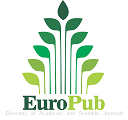Dampak Pandemi Covid 19 terhadap Tataniaga Hewan Qurban di Jabodetabek: Studi Kasus pada Mahir Farm
Abstract
The Covid 19 pandemic has a broad impact on the agricultural sector. In the livestock sub-sector, there is
usually an increase in demand for livestock and livestock products at certain moments, one of which is the
Eid al-Adha. However, the Eid al-Adha during the pandemic is different from the pre-pandemic period,
affecting the demand and supply of qurban animals. This study was conducted to identify the impact
of the Covid 19 pandemic on the value chain of the qurban animals. The research performed in-depth
interviews and an online survey with the actors along the chain and 29 Mahir Farm consumers. The
results showed changes in supply, distribution, marketing, and demand compared to the pre-pandemic
condition. As a response, Mahir Farm improved the sales by using an online mode and created a Tebar
Qurban program. Tebar Qurban is a program to optimize the qurban animals sales in the central of
production and suppliers to minimize the transportation cost. The adaptive strategies by improving
online sales and the Tebar Qurban program’s procurement effectively enhanced the sales of qurban
animals during pandemic Covid 19. The study also confirms that there were changes in the buying
behavior of qurban animals. Consumers preferred online purchasing compared to coming directly to the
qurban stall. The payment system’s ease is the most crucial factor in influencing consumers’ decisions to
purchase the qurban animal. This research underlines the importance of adaptive strategies to survive
during a pandemic.















